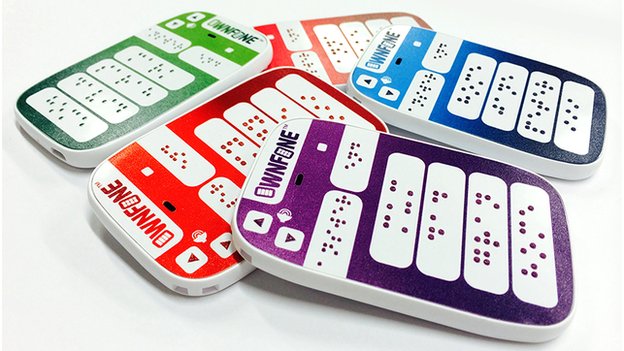Ever since Google presented Project Ara in collaboration with 3D Systems I have started to think about what a killer app for 3D printing could look like and how it will probably be linked to mobile communications. The new Braille Phone, 3D printed by the English company OwnFone, further strengthens this conviction, as well as the conviction that 3D printing for people with disabilities will be key in understanding — and fully unlocking — the possibilities of personalized manufacturing.
The “killer app” moniker, originated as a video game industry term to define a game that would compel users to buy the console. It is more widely used these days for any application of any technology that compels users to buy into that technology and it fits 3D printing like a glove. What will make ‘everyone’ buy, or aspire to buy, a desktop 3D printer? I am starting to believe that the possibility of 3D printing mobile phones – or mobile phone modules – at home is a strong contender. It will take time to prove me right or wrong, but the OwnPhone could be a nice start along this path.
The company has been producing fully customizable and easy to use mobile phones for kids and the elderly and it is easy to see how 3D printing is key. The first models, dubbed “1st phone” and “2nd phone” for the children models, and more generally OwnPhone for the senior and work-calls models, were partially 3D printed. Customers (only UK-based customers for now) can customize up to four buttons with the names or images of the numbers they call most.
The Braille phone takes personalization through 3D printing to a new level, since it is required to make the braille codes (or 3D texts) pop out of the buttons to be read through touch. Like for the other models both the front and rear can be customized online before placing the order with colours and images. Depending on the level and type of customization the final price can vary from £40 to little over £70: the low cost was possible because the low series are made through 3D printing technologies.
“This is the first phone to have a 3D printed keypad and for people that can’t read Braille, we can print texture and raised text on the phone. Our 3D phone printing process is patent pending.” its inventor, Tom Sunderland, told the BBC.
A braille phone for the blind may be a bit of an overkill, with smartphone vocal helpers becoming more proficient, but a £40 3D printed phone that you might soon be able to manufacture at home may be another kind of kill: a killer app.
Source: BBC




